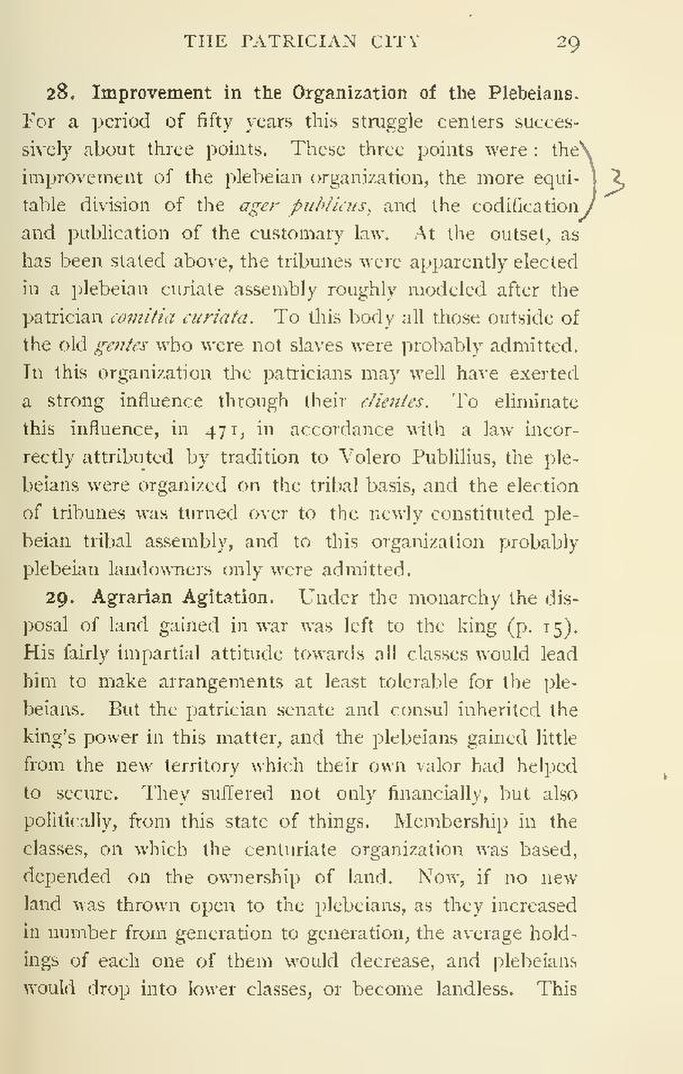28. Improvement in the Organization of the Plebeians. For a period of fifty years this struggle centers successively about three points. These three points were: the improvement of the plebeian organization, the more equitable division of the ager publicus, and the codification and publication of the customary law. At the outselt, as has been stated above, the tribunes were apparently elected in a plebeian curiate assembly roughly modeled after the patrician comitia curiata. To this body all those outside of the old gentes who were not slaved were probably admitted. In this organization the patricians may well have exerted a strong influence through their clientes. To eliminate this influence, in 471, in accordance with a law incorrectly attributed by tradition to Volero Publilius, the plebeians were organized on the tribal basis, and the election of tribunes was turned over to the newly constituted plebeian tribal assembly, and to this organization probably plebeian landowners only were admitted.
29. Agrarian Agitation. Under the monarchy the disposal of land gained in war was left to the king (p. 15). His fairly impartial attitude towards all classes would lead him to make arrangements at least tolerable for the plebeians. But the patrician senate and consul inherited the king's power in this matter, and the plebeians gained little from the new territory which their own valor had helped to secure. They suffered not only financially, but also politically, from this state of things. Membership in the classes, on which the centuriate organization was based, depended on the ownership of land. Now, if no new land was thrown open to the plebeians, as they increased in number from generation to generation, the average holdings of each one of them would decrease, and plebeians would drop into lower classes, or become landless. This
